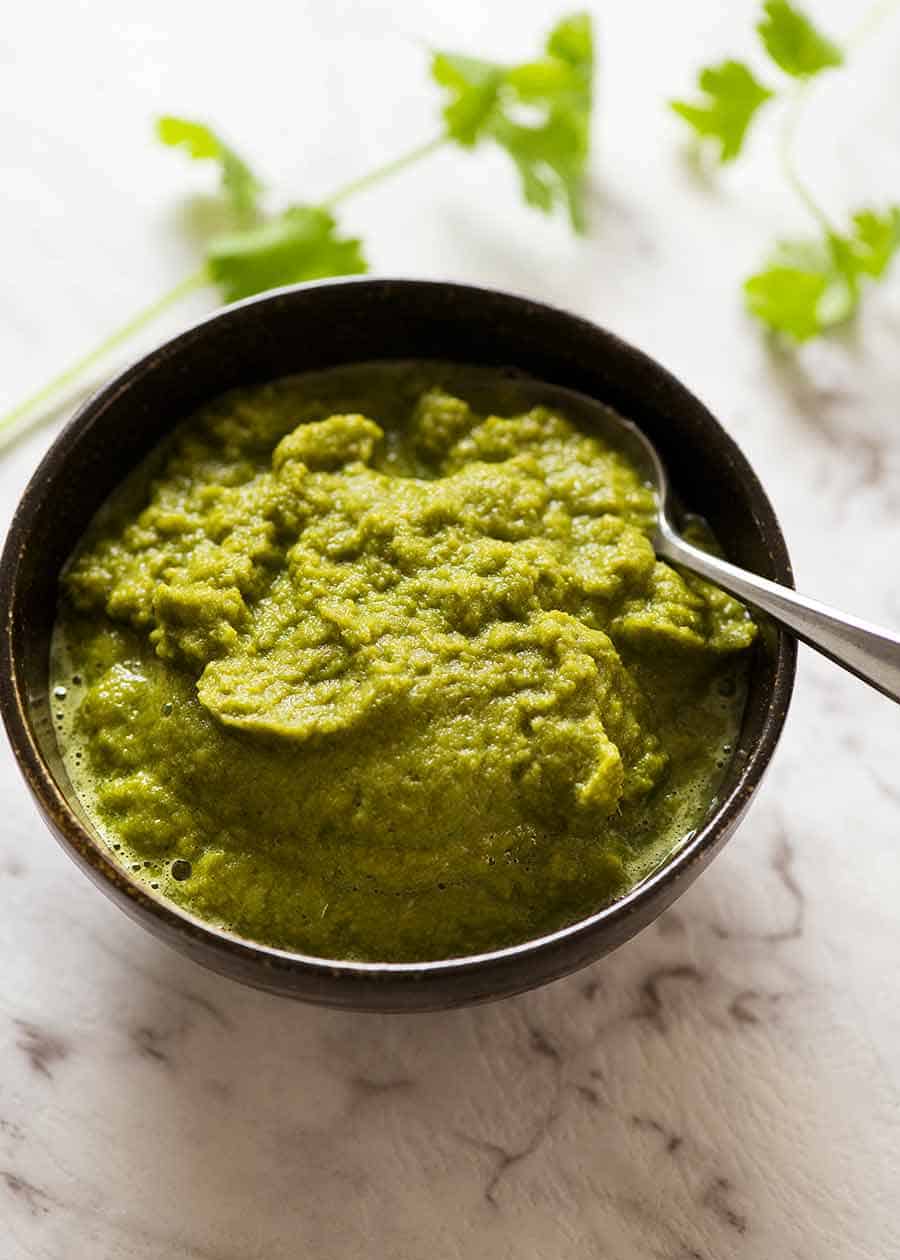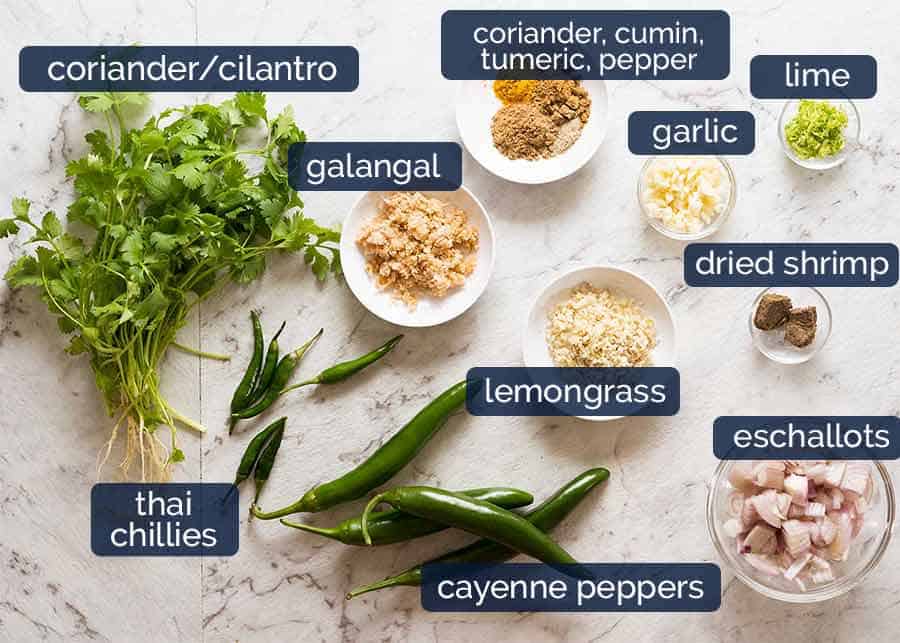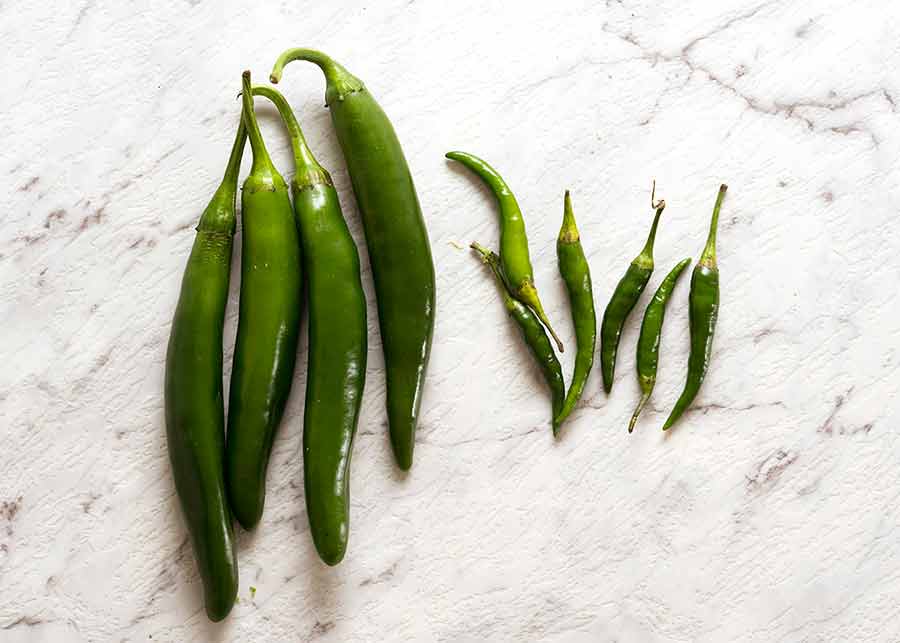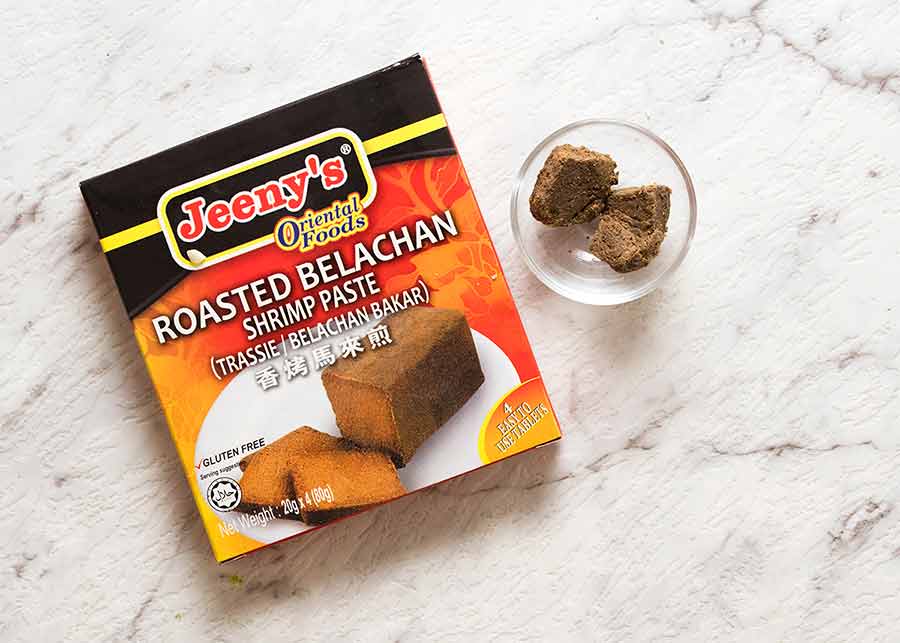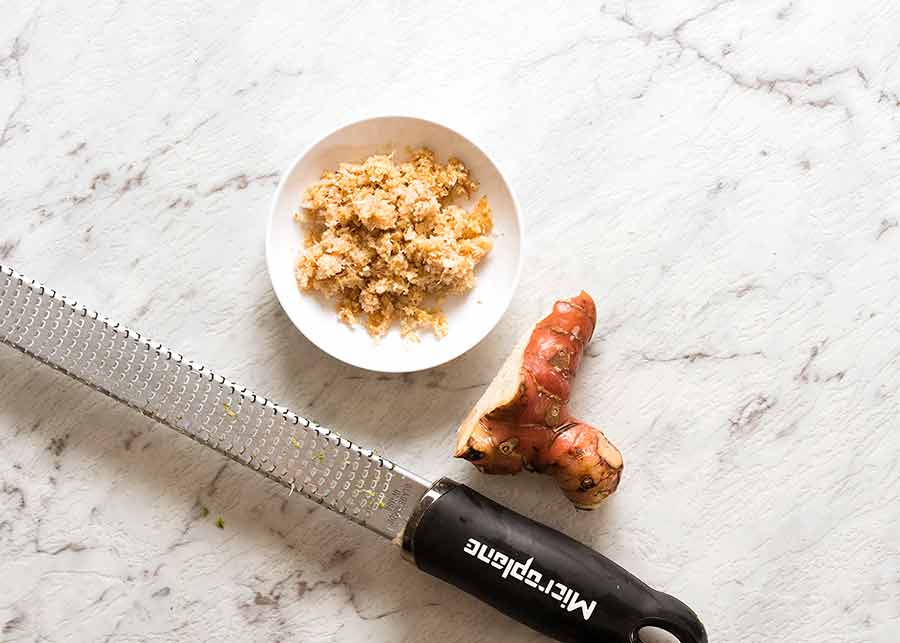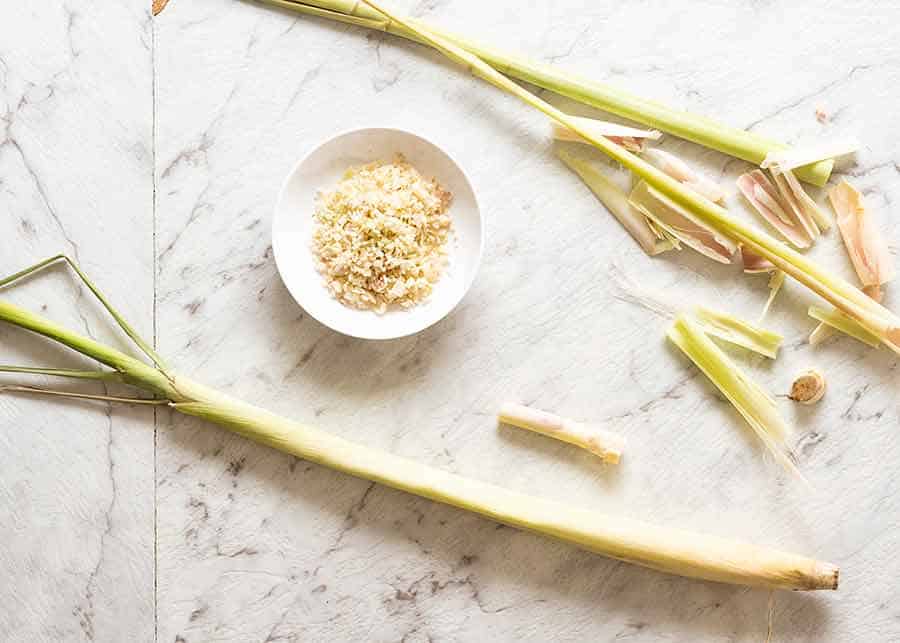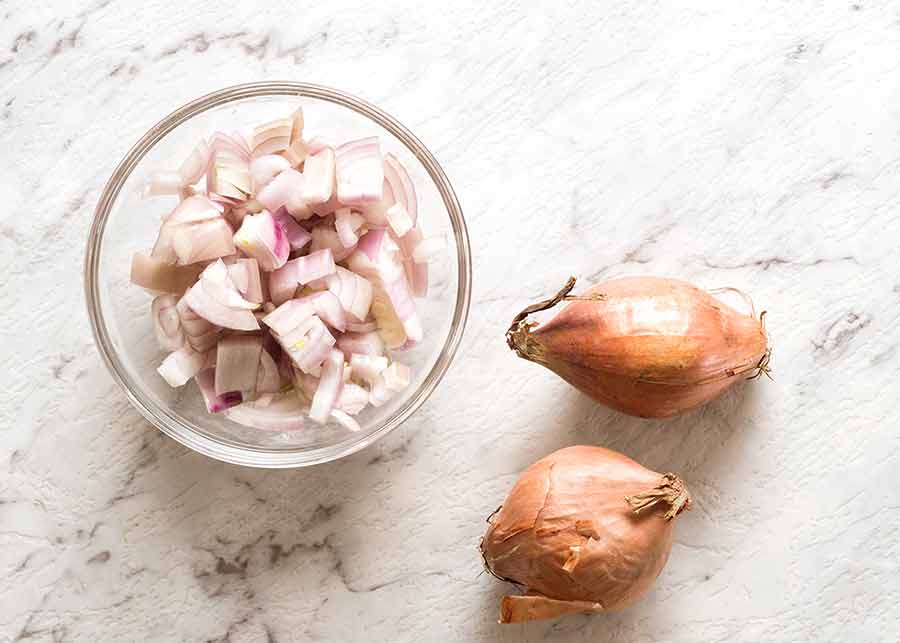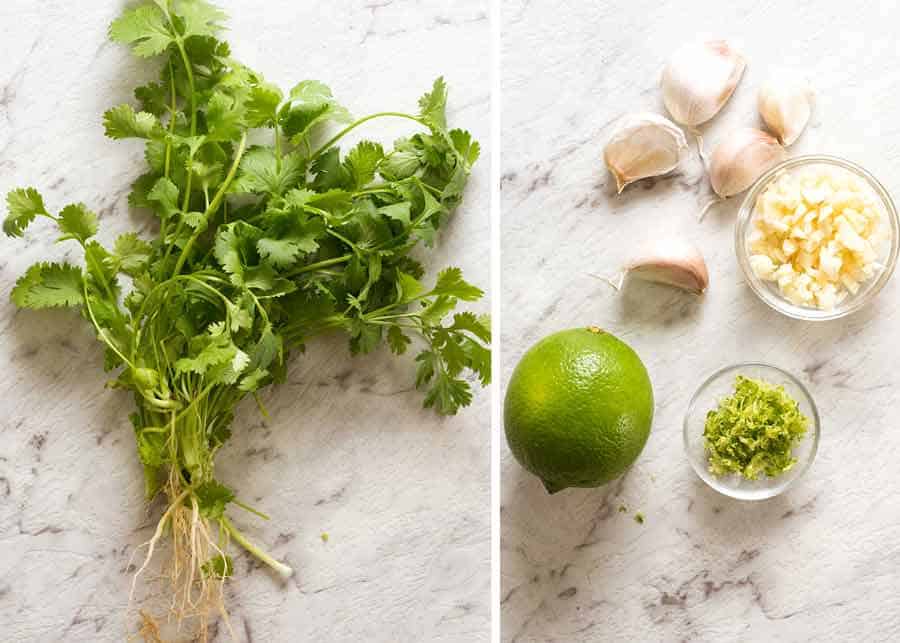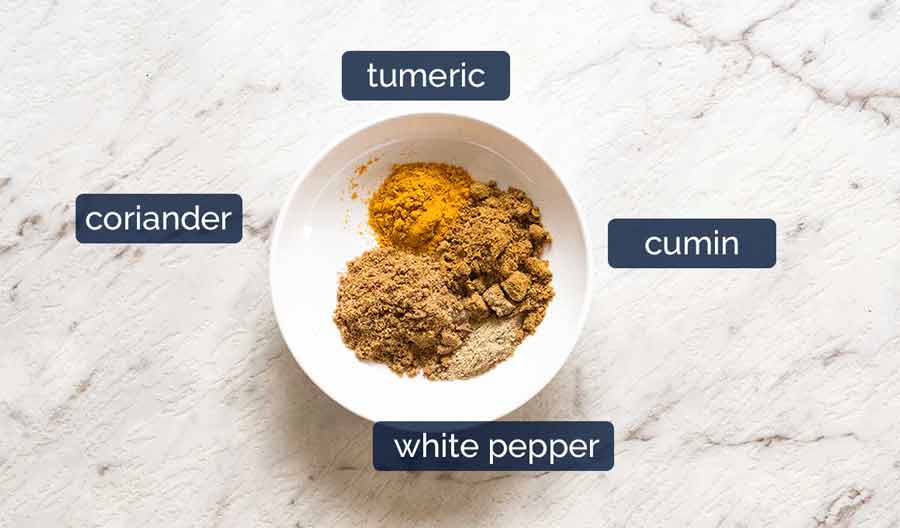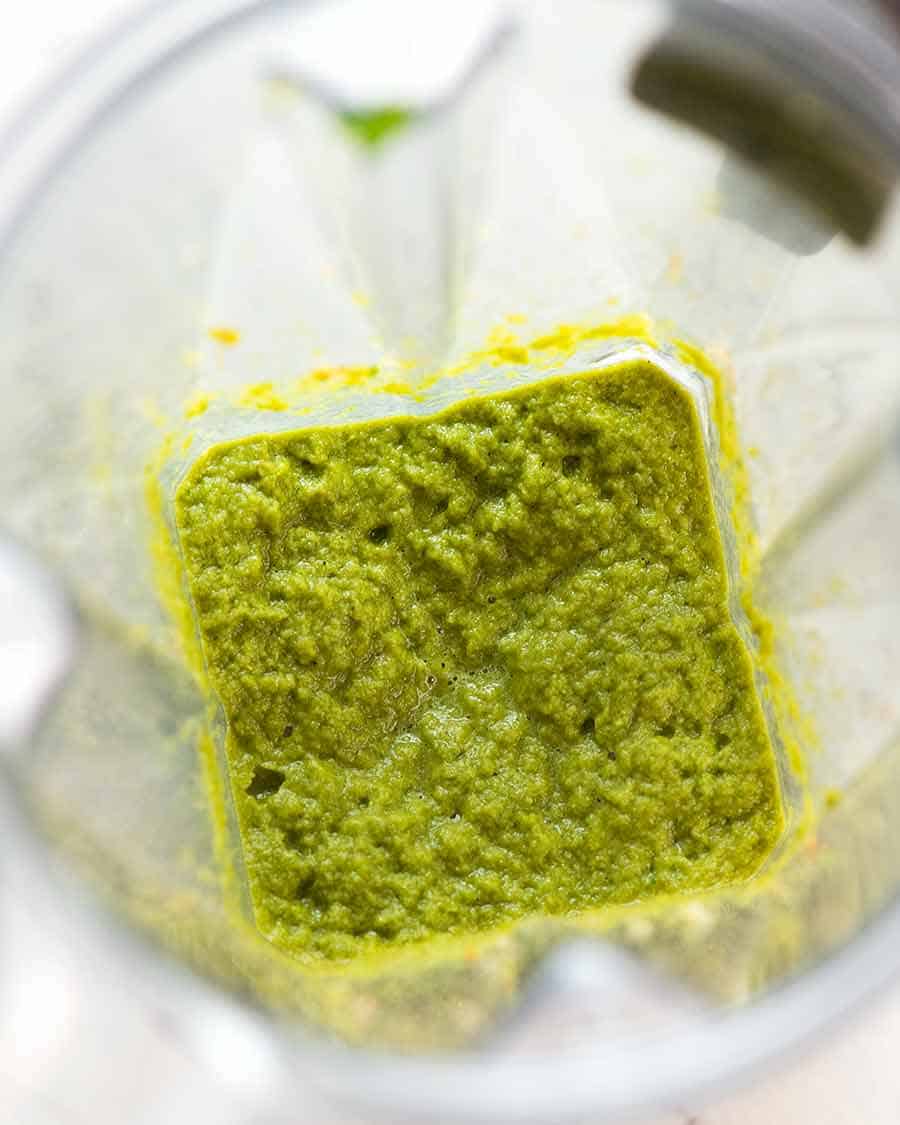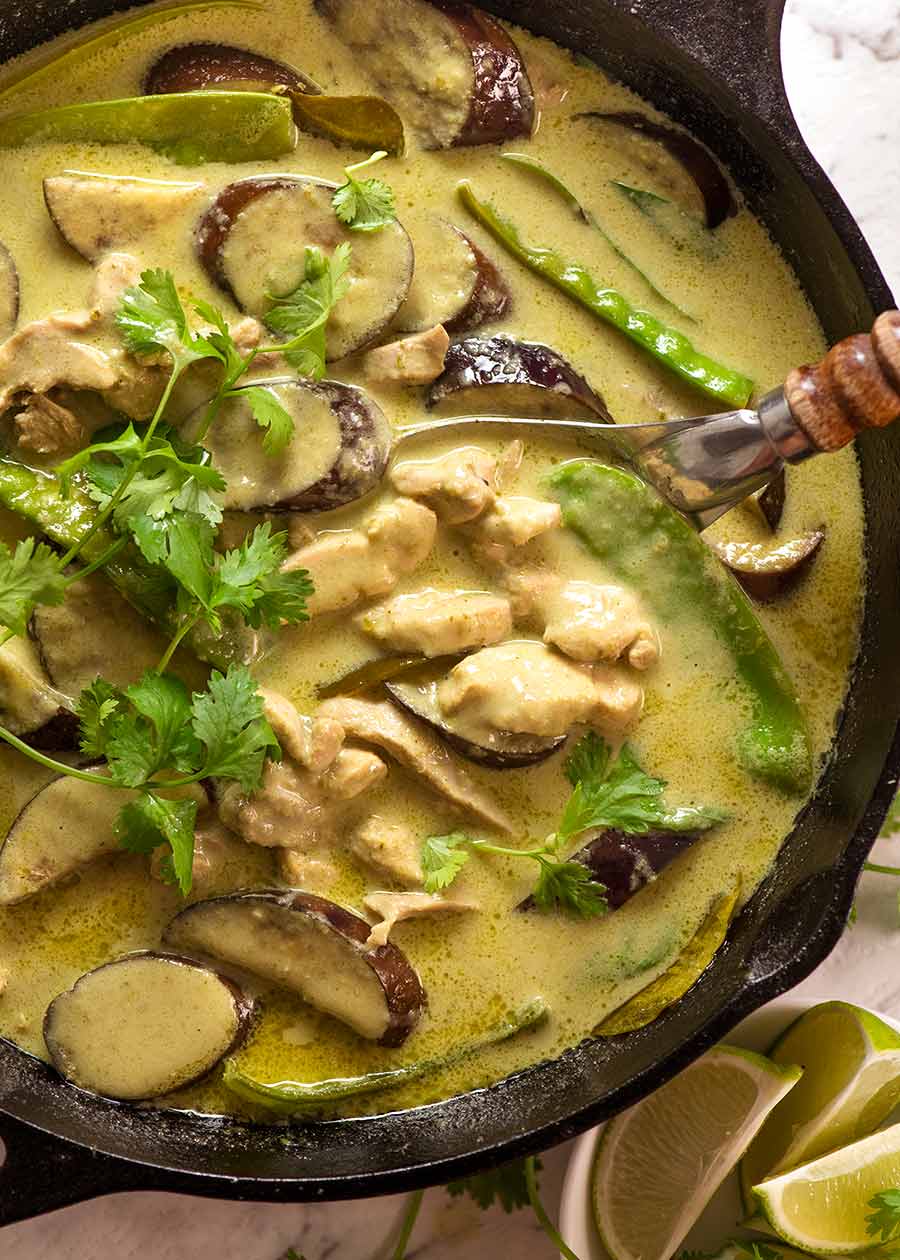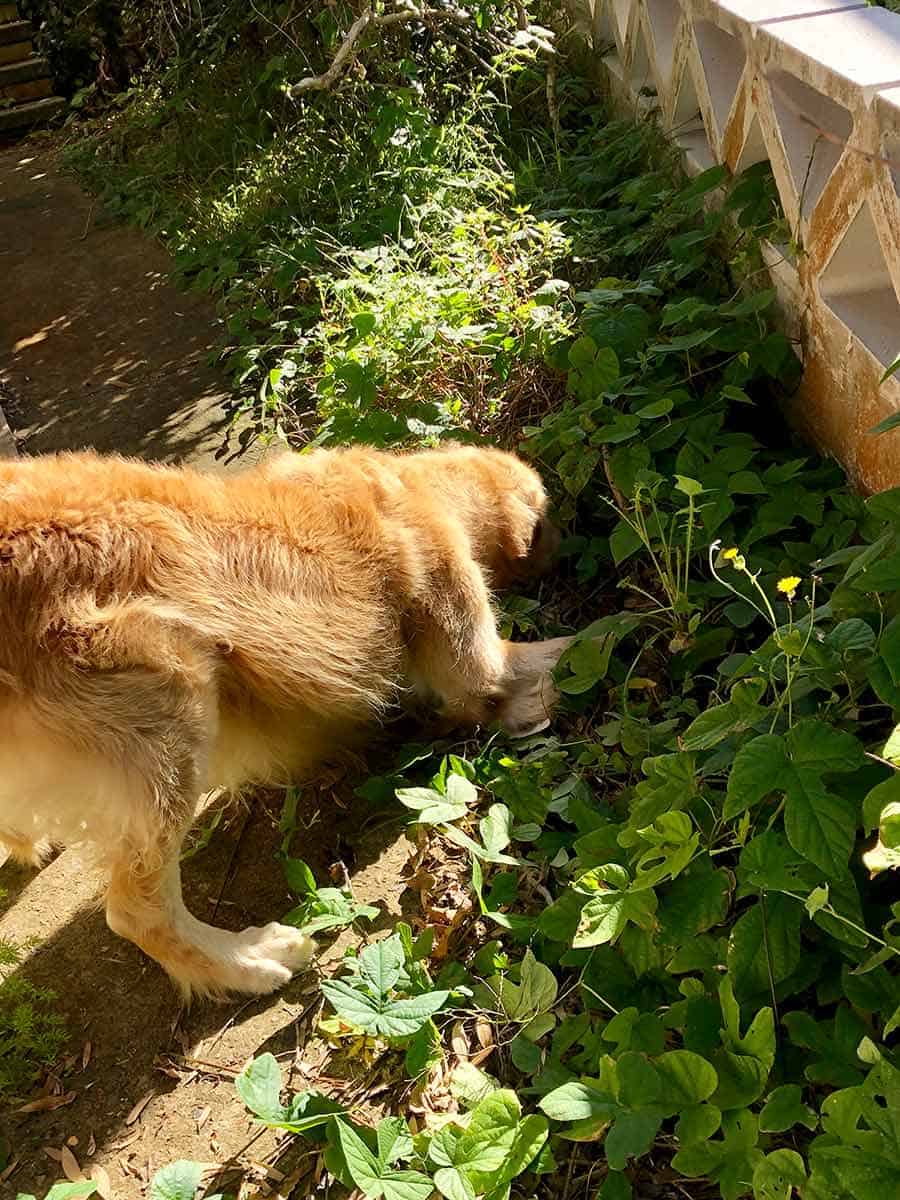Use it now to make Thai Green Curry – or keep it for later!
Thai Green Curry Paste recipe!
Usually, the main reason to make curry paste yourself is because you just can’t get the same intense, fresh flavour in a jar. And while that holds true for green curry paste, the other very big advantage is that you can control the spiciness without compromising flavour or the signature green colour. You can’t do that if you buy curry in a jar. You make do with what you get – and if you use less to reduce the spiciness, that means diluting the curry flavour. As with all curry pastes like Thai Red Curry Paste, Thai Yellow Curry and Massaman Curry Paste, actually making the this green curry paste recipe is very straight forward – just plonk and blitz until smooth. The part that takes the longest is gathering the ingredients – though it you’ve got an Asian grocery store nearby, it will be a breeze!
I don’t usually make it a habit to go through every ingredient in a recipe, but given there are a few in this that are not so main-stream, I thought it might be helpful! So here we go – let’s start with the most important:
Green Chillies
The colour of green curry comes from green cayenne peppers (left, large), and the spiciness comes from the little Thai green chillies (right). They might be small, but they pack serious heat! For a very mild curry, skip the Thai chillies altogether. For a mild curry, just use 1 Thai chilli. For pretty spicy but not “blow your head off” (aka David Thompson’s Long Chim), use 6 Thai chillies per the recipe. I enjoy it without swearing and I’m a spice wuss! (Though I like to think I’m Chilli-tough, I’m not at all.)
Dried Shrimp Paste (Belachan / Belacan)
Fermented fish and shrimp flavours are the backbone of South East Asian cuisine and Thai Green Curry is no exception. For Thai Red Curry Paste, we like to use shrimp paste in a jar which is oilier and has a few more flavourings added. However, if you use shrimp paste in green curry, it makes it brown! Hence we use dried shrimp. It comes in little blocks, it stinks and it’s hard to believe it’s the secret ingredient in Thai Green Curry. But it is. If you skip it, you will be disappointed with the end result. Shrimp paste (comes in jars, photo here) is the best sub but note it makes the curry a bit less green. The other alternative (which I haven’t tried but I think will be very good) is to use anchovies in oil (chop and measure amount per recipe) + 1 tsp fish sauce (for extra depth of flavour).
Galangal
Looks like ginger with red skin, but it’s way harder. It kind of tastes like ginger too, but it’s more citrusy. Nowadays in Australia it’s sold at large fresh produce stores like Harris Farms, and sometimes even at Woolworths. Otherwise, it’s readily available at Asian grocery stores. As a last resort, it can be substituted with ginger and lime zest – directions in the recipe notes.
Lemongrass
Moving onto more familiar territory here! Lemongrass is a key flavour in green curry paste and you can’t substitute paste or dried for fresh lemongrass. To prepare, peel the outer reedy layers to reveal the white stem, and just use the lowest 10 cm / 4″ or so. You’ll know which part should be used because the reedy part can’t be chopped.
Eschalots (Baby Onions!)
The names for this are so confusing so I wanted to show a picture to be very clear! In Australia, we call these eschalots or French shallots or French onions. In America, they are known as shallots. In Australia, shallots are what Americans know as scallions or green onions, as does much of Europe. It’s very confusing. Hence – photo. Green curry paste calls for the thing that looks like BABY ONIONS!!
Coriander / cilantro, lime and garlic
Traditional Thai Curry Pastes are mostly made with coriander/cilantro roots. The roots have intense coriander flavour that’s sort of earthy. Because the roots are so highly prized in Thai cooking, coriander is sold with long roots in Thai grocery stores. Unfortunately in Western grocery stores, the roots tend to be quite short and dismal. They are also a massive pain to wash thoroughly – no one wants dirt grit in their curry! So to get around this problem, we use a combination of whatever roots we can get, stems and some leaves (which has the added bonus of adding to the lovely green colour!)
Green Curry Spices
Green curry is mostly about the intense fresh aromatics so there’s not much dried spices in it. If you Dom’t have white pepper, switch it with finely ground black pepper. Don’t skip the tumeric – as well as adding flavour, it is the ingredient that gives the green curry paste a beautiful warm glow!
Making the green curry paste
Once the ingredients are ready to go, just blitz in a blender or a powerful food processor. The smoother you can make the paste the better – nobody wants gritty bits of galangal or lemongrass in their otherwise silky curry sauce! This is the reason I opt to use a blender – because I find it does a better job of blitzing all the ingredients into a smooth paste. I’ve noticed Asian chefs on cooking shows use blenders as well.
How to store curry paste
A fresh curry paste made with aromatic herbs like this one is best used immediately. Otherwise, store it in an airtight container for 2 days in the fridge, or up to 1 month in the freezer. From a food safety point of view, even 3 months is fine but I swear it starts losing flavour after about 1 month (I could be imagining things!).
What to use Green Curry Paste for
The most obvious use for Green Curry Paste is to make Thai Green Curry which I have also shared today. If you’ve ever had a really great Thai Green Curry either outside of Thailand, or even better, in Thailand itself, I think you’ll really enjoy this! Here are some either ways to use green curry paste:
Fried Rice – fry a little paste in oil then proceed with your favourite Fried Rice recipe. Thai GREEN CURRY Fried rice!! Spice up soups – Fry a little paste in oil then proceed to make your favourite soup. Imagine – green curry spiced Cauliflower Soup or Broccoli Soup! Stir Fries – fry a little paste in oil then proceed to make your favourite stir fry. Soup – Dilute the curry sauce in the Thai Green Curry with more chicken or vegetable broth and more coconut milk to make a SOUP broth!
Before I sign off, I just want to say that while curry in a jar lacks the same freshness of homemade, you can still make a terrific Green Curry by pimping up a store bought curry paste with fresh garlic, ginger and lemongrass. You’ll find the directions in the Thai Green Curry recipe, along with my recommendation for the BEST curry in a jar (and it’s the cheapest too!) – Nagi x
Homemade Thai Green Curry Paste
Watch how to make it
Video coming shortly! It literally is plonk and blitz. Video to make the curry is in the Thai Green Curry recipe.
Life of Dozer
Torturing a blue tongue lizard (the very existence of which tortures me!)
